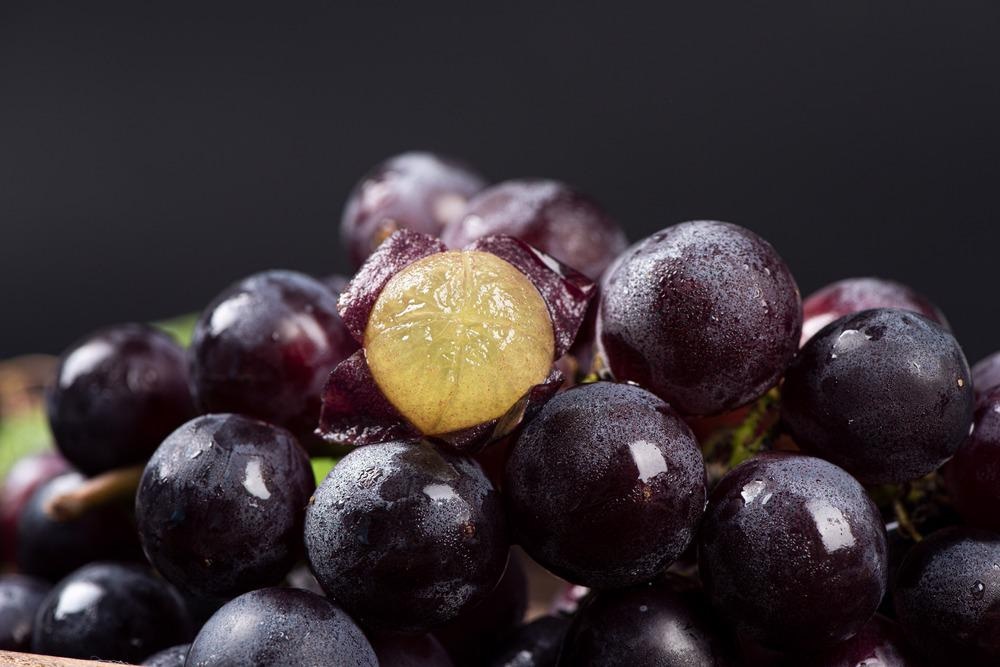According to the latest research published in the journal Materials Today Physics, nitrogen-doped fluorescent carbon dots could be used to effectively detect baicalin, which plays a major role in enhancing liver health following damage, lowering liver problems, and managing initial liver cancer.

Study: Exploration of nitrogen-doped grape peels carbon dots for baicalin detection. Image Credit: kungfu01/Shutterstock.com
Liver Diseases and Baicalin
Liver disease remains a significant cause of illness and death globally. Each year, around 2 million people die from liver problems and carcinoma, responsible for nearly 3.5 percent of all fatalities worldwide.
Scutellariae Baicalensis (Baikal skullcap) produces a flavonoid chemical called baicalin, isolated from the rhizome. Baicalin has been shown to have antimicrobial, anti-inflammatory, and anti-periodontal properties.
This chemical has an important role in enhancing liver function following damage, lowering liver illness, and treating primary liver cancer due to its outstanding antioxidant qualities, blocking enzymes, and controlling resistance.
Baicalin Analysis and Detection Processes
Thin-layer chromatography, electrochemistry, high-performance liquid chromatography, liquid-phase chromatography, and other technologies have been used to analyze and identify baicalin in the past. Although these approaches provide good detection results, they have drawbacks such as costly instruments, time-consuming, intricate pre-treatment, and unreliable sensor signals which limit their applicability.
Owing to its simple design, high efficiency, great responsiveness, excellent durability, and quick reaction, fluorescence has emerged as the most interesting candidate for these methods. Unfortunately, there is a scarcity of information on baicalin detection using the fluorescence approach.
Carbon Dots
Carbon Dots possess strong bioactivity, distinctive absorption spectra, low price, eco-friendliness, plentiful chemical bonding, excellent durability, and electron affinity. Because of this, they have piqued researchers' curiosity for years and paved new paths for the development of carbon-based nanomaterials.
PT-CDs (Carbon dots) were produced and tested for baicalin identification in the current study. A straightforward, non-polluting solitary solid-state pyrolysis technique was devised to manufacture nitrogen-doped carbon dots (PT-NCDs) with emission wavelength for baicalin detection using discarded grape skins as the organic carbon source and urea as the source of nitrogen.
Preparation of PT-Nitrogen Doped Carbon Dots (PT-NCDS)
Grape skins were washed ultrasonically twice with deionized water and alcohol, dehydrated, and crushed into powders. A 50 mL crucible was filled with 2.0 g of grape peel powders and 4.0 g of urea, which was then heated at 200 °C for 8 hours. Finally, the purified PT-NCDs were obtained after freeze-drying under vacuum at -50 ℃ for 48 h.
Experimental Findings
A transmission electron microscope was used to examine the particulate structure and distribution of PT-NCDs (TEM).
The PT-NCDs displayed outstanding crystallographic properties with a crystal spacing of 0.32 nm, which corresponded to the (002) graphite crystalline lattice, indicating that they were graphitized to some extent.
The fluorescent stability of PT-NCDs is critical for biochemical sensor applications. The emission intensity did not change considerably when the NaCl concentration was increased to 1.5 M, indicating that the as-prepared PT-NCDs had high salt tolerance.
The effective application of PT-NCDs in biomedical imaging or monitoring requires a stable environment. In conclusion, the PT-NCDs fluorescent sensor, as-fabricated, offers great potential application in the examination of complicated materials.
The effects of other intervening compounds on the fluorescence emission effect were found to be minimal. Simultaneously, the influence of contemporaneous compounds was investigated further by raising the quantities of inhibitory compounds with a margin of error of less than 5%. Because the maximum tolerable quantities of conflicting chemicals were all high, PT-NCDs may be employed as a fluorescence sensing framework to distinguish baicalin precisely.
The fluorescence intensity at 520 nm steadily reduced when baicalin concentration (0-70 M) was increased, indicating that PT-NCDs are susceptible to baicalin dosage.
The research has shown that the fluorescent approach for determining baicalin relying on nitrogen-doped PT-NCDs is efficient and practical, and it may be used to identify baicalin in authentic biological materials.
In conclusion, PT-CDs were shown to have excellent durability and specificity for baicalin detection. Sustainable fluorescence carbon dots (PT-NCDs) with subatomic produce of 15.3 percent were designed and synthesized through a simplified, eco-friendly, solitary solid-phase thermal methodology based on biowaste grape peels as the carbon source and urea as the nitrogen dopant from the context of sustainability safeguard, and ecological sustainability.
Continue reading: Green Production of High Performance Nanocomposites from Grapefruit Peel.
Reference
Tang, X. et al., (2021) Exploration of Nitrogen-doped Grape Peels Carbon Dots For Baicalin Detection. Materials Today Physics. 100576. Available at: https://www.sciencedirect.com/science/article/pii/S2542529321002376?via%3Dihub
Disclaimer: The views expressed here are those of the author expressed in their private capacity and do not necessarily represent the views of AZoM.com Limited T/A AZoNetwork the owner and operator of this website. This disclaimer forms part of the Terms and conditions of use of this website.